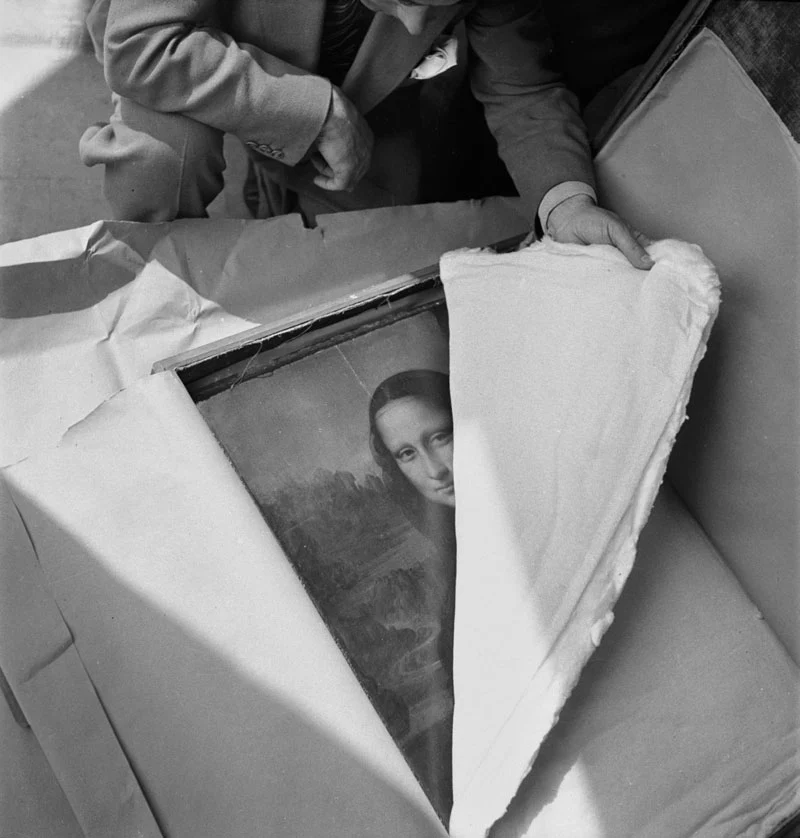In the realm of art, few names resonate as profoundly as the Mona Lisa. The enigmatic smile of Leonardo da Vinci’s masterpiece has intrigued audiences for centuries, making it a timeless symbol of aesthetic achievement celebrated and recognized globally. This iconic painting’s intrigue is not limited to its creation but extends to its rich history, including its extraordinary journey during World War II.
An important but often overlooked aspect of art is the preservation and transportation of these priceless creations, especially in times of crisis. Imagine the immense responsibility of transporting such invaluable pieces safely. The individuals tasked with this monumental job are known as ‘art movers,’ the unsung heroes of the art world. In this blog, we’ll delve into the hidden history and explore one of the most secret, daring, and critical art relocations – the journey of the Mona Lisa during World War II.
Table of Contents
ToggleThe Historical Context: World War II
World War II, a period of global conflict and chaos that extended from 1939 to 1945, profoundly affected every aspect of life, including culture and art. Amid the turbulence, nations braced themselves for potential threats to their cultural and artistic treasures. Countless works of art were endangered, susceptible to destruction, looting, or loss due to the ravages of war.
In this bleak context, certain valuable works, including the Mona Lisa, stood out as particularly high risk. This wasn’t just due to the painting’s intrinsic value, but also because of what it represented – a symbol of enduring human achievement in aesthetic creativity. As such, a mission was embarked upon to relocate the Mona Lisa, secretly and securely, far from the Louvre Museum in Paris, where it had been on display since 1797.
The Role of Art Movers
The task of moving a piece of art, especially one as famous and invaluable as the Mona Lisa, is akin to moving a small piece of humanity’s soul. It requires extensive planning, precise execution, and utmost secrecy. The art movers assigned to this operation had to ensure the painting was packed in a way that could withstand the rigors of the journey, remaining safe from potential damage and degradation.
Art movers, therefore, were not just handlers in this scenario; they were guardians of cultural heritage. Their role was pivotal in maintaining the Mona Lisa’s integrity throughout the ordeal. Beyond physical preservation, they also faced the enormous challenge of preventing the masterpiece from falling into the wrong hands amidst the chaos of war. It was a job that required not just physical skill and logistical prowess, but a deep understanding of the painting’s cultural significance and a commitment to preserving it.
The Journey of the Mona Lisa
The Mona Lisa’s journey during World War II was one of secrecy, meticulous planning, and careful execution. The masterpiece moved from one undisclosed location to another across France, including various chateaus and abbeys, each providing temporary refuge. Each stop along the journey required careful unloading, conditions conducive to art preservation, and then repacking – a process demanding expert handling at every step.
The art movers involved had to remain vigilant throughout, ensuring the artwork’s safety and maintaining the confidentiality of the operation. Only a select few were privy to this information, and they held the heavy responsibility of ensuring that this invaluable piece of art, a priceless symbol of humanity’s cultural achievement, remained untouched by the ravages of war.
Aftermath and Lessons Learned
Once World War II concluded and peace was restored, the Mona Lisa returned to her rightful home at the Louvre. The painting’s safe return was a testament to the planning, skill, and sheer determination of the art movers. Their effort ensured that this embodiment of human creativity and resilience survived one of history’s darkest periods.
The operation to move the Mona Lisa set a precedent. It underscored the importance of specialized care and consideration for art during crises. The lessons learned from this historical art move have been instrumental in shaping contemporary protocols and training for art handlers globally. It emphasized the need for specialized knowledge, skills, and strategies to preserve and protect cultural heritage.
The Art Movers of Today
The profession of art moving has evolved significantly since the days of World War II, with advancements in technology, logistics, and methods. But the essence remains the same – the careful handling and secure transportation of priceless art.
Today, professional art movers grapple with various challenges, from transporting large installations across continents to ensuring the safe delivery of fragile antiquities to exhibitions worldwide. They employ advanced tools and technologies to monitor and maintain ideal conditions for artworks in transit, utilizing everything from customized climate-controlled crates to state-of-the-art security systems. Yet, the responsibility and precision that the profession demands remain as challenging and critical as ever.
Conclusion
Art movers, like those who courageously and meticulously orchestrated the safe passage of the Mona Lisa during World War II, are the unsung heroes of the art world. Their work, often conducted behind the scenes, plays a crucial role in preserving and sharing humanity’s rich cultural heritage.
The story of Mona Lisa’s wartime relocation is a testament to the extraordinary lengths we go to ensure the survival and preservation of our shared cultural and artistic treasures. It serves as a stark reminder of the ongoing relevance and importance of the role played by art movers – professionals dedicated to the safekeeping and preservation of art. Their work ensures that these masterpieces continue to inspire and move us, connecting us with our past, present, and future, for generations to come.
The next time you stand before a masterpiece in a museum, take a moment to appreciate not only the artwork but also the invisible hands that have carefully transported it for your enjoyment. Remember, the journey of an artwork is often a tale as intriguing and meaningful as the art itself.





